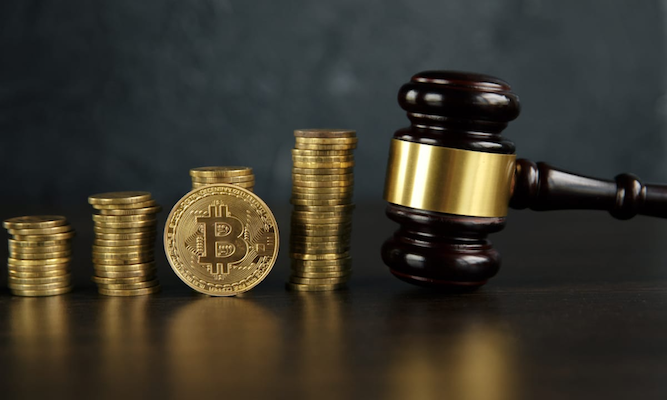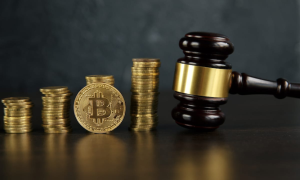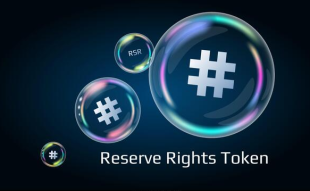Join Our Telegram channel to stay up to date on breaking news coverage
According to recently suggested regulatory rules, several cryptocurrency ventures could face enforcement action.
How the U.S. government intends to regulate cryptocurrencies has been clarified in recent months by statements made by important officials of the Biden Administration, enforcement by regulators, and a number of reports. Janet Yellen, the Treasury Secretary, has been particularly outspoken in asking for the regulation of digital assets, particularly dollar-pegged assets. Following the demise of the TerraUSD stablecoin in May, Yellen and a number of Congressmen pledged to create a thorough stablecoin regulatory framework in order to safeguard American investors. The “endogenously collateralized stablecoins” are subject to a two-year moratorium, and all non-bank stablecoin issuers may be required to register with the Federal Reserve under a new stablecoin regulation bill that was released in draft form last week.
Recently, the Securities and Exchange Commission and the Commodities and Futures Trading Commission increased their enforcement of cryptocurrency laws. The SEC charged Coinbase, a cryptocurrency exchange, in July with listing “at least nine” tokens that, in its opinion, should be considered securities. The agency also said that it is looking into all U.S.-based cryptocurrency exchanges after chair Gary Gensler said he thought some of them were trading against their own users in violation of the securities laws. Since filing a first-of-its-kind lawsuit against the decentralized autonomous organization Ooki DAO for allegedly operating an illegal derivatives trading platform, the CFTC, which is typically seen as being more lenient on cryptocurrency regulation than the SEC, has alarmed cryptocurrency users as well.
However, the White House’s initial regulatory framework for cryptocurrencies, which was published earlier this month, provided the majority of the material surrounding potential crypto enforcement. The plan outlined how several government organizations would work to monitor the development of the digital asset market and concentrate on objectives including boosting access to financial services and combating financial crime.
It’s getting harder and harder to understand how everything will fit into the current crypto scene with all of the material being created and disseminated. Three cryptocurrencies are examined here as they may be subject to regulation under recently published legislation.
Tornado Money (TORN)
The privacy protocol’s TORN token may be the most visible cryptocurrency asset that might be subject to regulatory attention in the future after the Treasury Department sanctioned Tornado Cash.
The protocol was sanctioned on August 8 by the Treasury’s Office of Foreign Assets Control because it “failed to apply effective safeguards” to stop cybercrime-related money laundering.
By allowing users to deposit ETH or USDC to one Ethereum address and withdraw it to another, Tornado Cash eliminates the usual chain of traceability found on open ledger blockchains. The protocol has been employed by many crypto natives for legal reasons, such as preserving financial anonymity, but it has also grown in popularity with hackers wanting to launder their looted digital assets.
The Biden Administration has made it clear that it intends to fight all types of crypto-related crime through its regulatory framework for the industry. According to the research, state-sponsored North Korean syndicates like Lazarus Group, which was in charge of several significant crypto breaches over the past year, have been using digital assets. With such a harsh response to criminal organizations, any protocol aiding in the laundering of their illicit proceeds will be a top priority for more enforcement.
Although the United States has approved the Tornado Cash protocol, making any engagement with it illegal there, there is little that the government can currently do to enforce the ban. Nevertheless, many alternative DeFi protocols that seek to support American users have proactively complied with the restrictions by disabling access to addresses that have communicated with Tornado Cash.
The value of TORN significantly declined in response to the enforcement action against Tornado Cash, falling from a local high of $30.43 to $5.70 today. Future U.S. crypto legislation are not expected to aid Tornado Cash or its coin, as its developers have showed no interest in altering the protocol to make it compliant with anti-money laundering laws.
MakerDAO (MKR and DAI) Although the Maker system and its overcollateralized DAI stablecoin have not yet been included in any U.S. crypto regulations, users believe that it may come soon.
Rune Christensen, a co-founder of MakerDAO, has published a “Endgame Plan” to the DAO governance forum explaining how the protocol might be prepared for future crypto regulation. Christensen’s idea suggested borrowing DAI against physical assets and using the interest to purchase ETH on the open market. Whether MakerDAO should take into account allowing DAI to float free of its dollar peg will depend on how well it acquires ETH over the course of the next three years.
Because MakerDAO issues a stablecoin that is pegged to the dollar, according to Christensen, American regulators are likely to pay attention to the company. When this occurs, even if the Maker protocol wanted to, it would be impossible to comply with anti-money laundering regulations like those imposed on Tornado Cash. According to Christensen, allowing DAI to stray from its dollar peg and turn into a free-floating asset would be a preferable long-term solution because it would lessen the regulatory burden placed on the protocol.
Right now, it doesn’t appear that MakerDAO will need to put any such plans into action. Under Yellen’s supervision, a House Stablecoin Bill draft that was just made public shows a more cautious approach to stablecoin regulation. Only stablecoins similar to Terra that are entirely backed by tokens from the same issuer would be subject to enforcement action under the proposed draft. To continue providing services to consumers in the United States, the proposal also mandates that all non-bank stablecoin issuers register with the Federal Reserve. It is not apparent whether MakerDAO would be unable to comply with this requirement because the specifics of any law have not yet been established.
The value of the protocol’s MKR governance token will probably be impacted if MakerDAO is unable to register as a non-bank stablecoin issuer in the United States. DAI might end up being classified as a restricted asset in the US, and OFAC might even impose sanctions on the Maker protocol’s smart contracts, just like it did with Tornado Cash. Even if it now seems unlikely, MakerDAO’s regulatory risk is something to be aware of.
Monero (XMR)
Last on our list is Monero, an entire blockchain rather than an Ethereum protocol like Tornado Cash or Maker.
Monero, which was first released in 2014, is likely the most popular and actively utilized privacy-focused blockchain in existence right now. Transactions made using Monero are entirely private, unlike those made with Bitcoin or Ethereum, which broadcast all transactions and wallet balances on a public ledger. All users’ privacy and anonymity are protected on the network via a number of privacy-preserving features, including ring signatures, zero-knowledge proofs, stealth addresses, and techniques for masking IP addresses.
Similar to Tornado Cash, Monero has angered U.S. officials because of its capacity to conceal its ownership and origins. The Internal Revenue Service began paying a cash reward of $625,000 in 2020 to anyone who could effectively break Monero’s anonymity and make the transactions of its users public. That bounty has never been claimed, though, which demonstrates how effective Monero’s privacy technology is.
However, Monero’s toughness has a downside. It may increase the appeal of using the network for those wishing to protect their financial privacy, but it also puts it a target for additional regulation and enforcement action. Cybercriminals use Monero for a variety of illegal activities, much like they do with Tornado Cash. For instance, the cybersecurity company Avast has already discovered malware that mines Monero on the victim’s computer and sends the proceeds back to the virus’ developer.
Even if Monero is a strong candidate for enforcement under the laws in place now, nothing has been done to stop it. Authorities have probably concentrated their attention on systems (like Tornado Cash) that enable a greater amount of illegal transactions. But if the crypto industry—and Monero—keeps expanding, it won’t be long until OFAC imposes more penalties on privacy technologies.
Any type of enforcement against Monero will almost probably have an impact on XMR, just as it did with Tornado Cash and TORN. Since no U.S.-based cryptocurrency exchange can confirm if tokens were obtained illegally, none of them now allow deposits in Monero or operate spot markets for XMR. Additional legislation, both domestically and internationally, will probably restrict access to the blockchain or make sending transactions through it illegal, which would be terrible for XMR.
The Regulation of US Crypto in the Future
Future legislation may affect many additional tokens in addition to Tornado Cash, MakerDAO, and Monero, which are among the cryptocurrency projects most likely to be affected. All protocols that enable the exchange of valuable crypto assets are expected to eventually be subject to anti-money laundering regulations, at least in the U.S.
Due to the perceived stability of the dollar as a reserve currency and the growing list of failed stablecoin ventures that have lost U.S. investors billions of dollars, those issuing their own dollar-pegged stablecoins will also probably face greater regulation. It remains to be seen, however, whether such legislation will hinder or promote the widespread use of cryptocurrencies. While some recent SEC and CFTC cases seem to take a tough stance against cryptocurrencies, others, such as the House Stablecoin Bill, are comparatively mild.
Cryptocurrency regulation is on the way, whether people in the industry like it or not. And those who are informed of the potential repercussions and comprehend them will be more prepared for the changes than those who bury their heads in the sand.
Tamadoge (TAMA)
There is no talk of regulation yet to the world of P2E or NFT gaming, but this particular coin is worth mentioning here, because of its potential. The idea is similar to Tamagotchi in that users can buy a pet, feed it, and then engage in combat with it once it has grown up. Because it is a play-to-earn (P2E) platform, players may make money while having fun and moving up the leaderboard by gaining Doge points. TAMA is a meme coin with utility that will be used to discover all of the special features of the platform.
There is also a lot to anticipate with the release of the augmented reality software (AR app) in the fourth quarter of 2023. The ability to be close to their pets while using the app will make it much easier for players to commit to maintaining their well-being.
As a result, a great deal of people are turning to TAMA for investments because of the excitement it has generated as a result of the current level of success it is enjoying.
Tamadoge was recently listed on OKX, one of the most popular cryptocurrency exchanges in the world. This may also act as a catalyst for a major price spike in the upcoming days. Whether this movement will be short-term in nature or not, the overall growth of the project is believed by many to be solid.
The full paper and roadmap for TAMA can be read here.
Related
- What Mark Cuban, one of the smartest investors, thinks about crypto right now
- Indian Finance Minister Urges IMF to Spearhead Crypto Regulation
- The United Kingdom adds more crypto regulatory measures against Russia
Join Our Telegram channel to stay up to date on breaking news coverage


